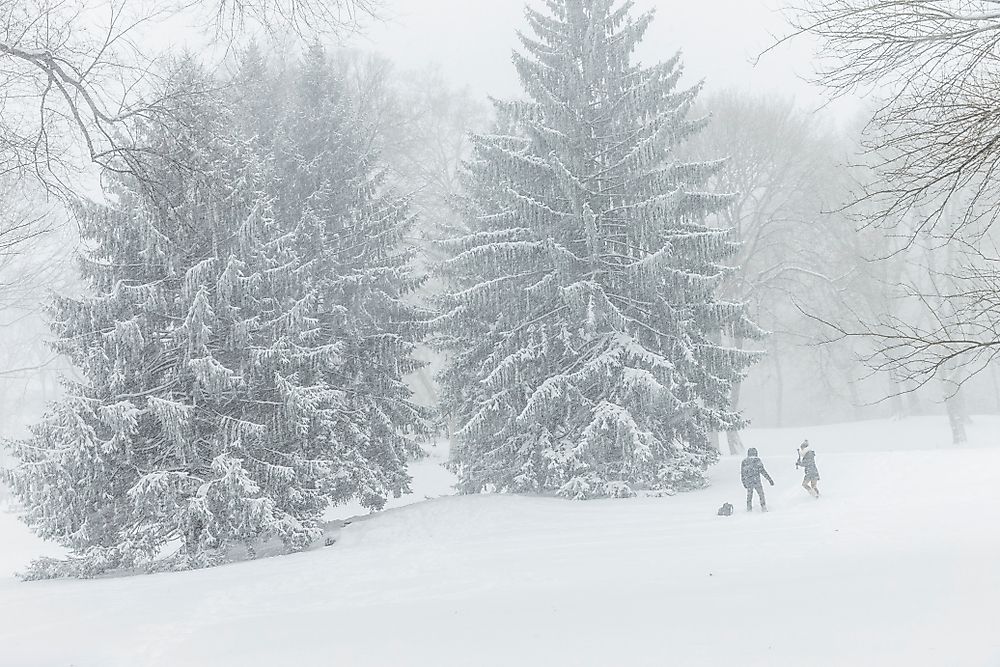What is a Bomb Cyclone?

A weather bomb is an informal term for a weather phenomenon known as explosive cyclogenesis. Other terms for the phenomenon are bomb cyclone, meteorological bomb, explosive development, or a meteorological bomb. A weather bomb is a low-pressure system at the 60° latitude with a central pressure which decreases by 24 millibars or more over a period of 24 hours. The rapid drop in pressure is unofficially called “bombing out.”
Mainly, this event is maritime and occurs during the winter. However, it sometimes takes place on land as well. An equivalent of this extratropical occurrence is the rapid deepening that occurs in the tropical regions.
A crucial thing to note is that the term “weather bomb” is used differently by some people. For instance, any destructive or dramatic weather occurrence is a weather bomb in New Zealand. In North America, weather bombs refer to heavy snowfall and nor’easters. The Japanese use the term, in their language, to mean an extratropical cyclone colliding with the meteorologically defined weather bomb.
Formation of Weather Bombs
One of the primary reasons that has been cited as a cause for weather bombs is baroclinic instability. What this means is that jet streams cause the air to accelerate rapidly up into the atmosphere in a column. This rapid acceleration removes air from the column thus making the column lighter. As a result, the space left by the air causes surrounding air to be pulled in sharply and quickly to fill the space left leading to an increased rotation in the column. The winds created gain speed and momentum and cause destruction. Other things suspected to cause weather bombs include latent heat release and the effect of the interaction between the sea and air.
Where Do Weather Bombs Occur?
There are four regions on the globe that are most affected by this phenomenon. These places are the North and South Atlantic, and Northwest and Southwest Pacific. Maximum frequency in the Northern Hemisphere is usually north of the Atlantic Gulf Stream as well as the Kuroshio Current in the western regions of the Pacific. In the Southern Hemisphere, the maximum frequency is with the Australia east coast lows.
Confusion with Winter Hurricanes
A critical difference between a weather bomb and a winter hurricane is the origin of its energy. A weather bomb’s energy comes from the air while a hurricane’s power is from the water. In addition, a hurricane is more compact and spins quickly thus making it more destructive than the weather bomb which is less compact and relatively slower.
Recent Occurrences
The most recent occurrence of a weather bomb took place in Nova Scotia, Canada on January 3, 2018. The winds were so powerful reaching speeds of up to 105 mph at the Nova Scotia coastline. These speeds were despite the fact that Nova Scotia and parts of Atlantic Canada were in places where the bomb was not at full capacity. Plenty of people were without power, and roads and property were damaged. Among the hardest hit was the Conrads Road and the streets of Liverpool.











